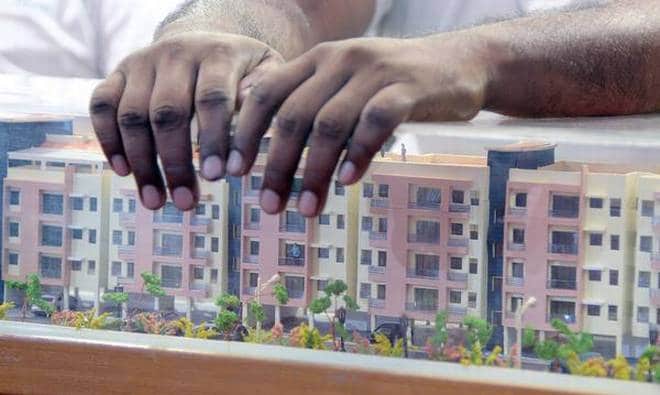In a country where the concept of housing ranges from hole-in-the-wall flats to billion-dollar homes, affordable housing could revive the fortunes of a flagging real estate sector. The affordable housing segment is expected to be the next big growth driver of the Indian economy with property pundits predicting a phenomenal growth rate of over 30% in the medium term.
According to Knight Frank India, a real estate consultancy, there has already been a significant surge in affordable housing projects across eight major cities. Homes priced below Rs 50 lakh accounted for about 71% of the total launches between January and June 2017, a significant 52% increase from the corresponding period in 2016.
Affordable housing is finally losing its ‘down market’ label and turning into a serious and respectable sector – a possible game changer for the real estate industry.
Government boost to affordable housing
Affordable housing dates back to as early as 2007 but the sector was riddled with several challenges such as lack of land and high construction costs. An unfavourable tax environment and lack of incentives also kept developers away. A major catalyst instrumental in this segment’s growth was the Indian government’s ambitious housing program.
In 2015, Prime Minister Narendra Modi announced the ‘Housing for All by 2022’ scheme targeting two crore homes to be built across all urban locations over the next five years. This year’s Union Budget has been a goodie bag for the affordable sector with the following schemes and incentives to promote its growth:
- The government has granted the much-coveted infrastructure status to affordable housing, giving developers access to cheaper sources of funding, including external commercial borrowings (ECBs).
- Affordable housing promoters have been granted more time for project completion – the deadline has been increased to five years from the current three years.
- Developers will get a year’s time to pay tax on notional rental income on completed but unsold units. The tenure for long-term capital gains for affordable housing has been reduced from three to two years.
- The qualifying criteria for affordable housing have been revised to 30 square meters and 60 square meters on the carpet, rather than the saleable area, for metros and non-metros respectively. This effectively increases the size of the affordable housing market across India.
- To augment the sops announced in the budget, a new Credit Linked Subsidy Scheme (CLSS) for the mid-income group was announced with a provision of Rs 1,000 crore.
Developers warming up to affordable housing
As a result of policy thrust and financial support, more developers are keen on making inroads into the segment. The latent demand for affordable housing always existed but with regulatory and government support and increasing urbanization, more and more developers are finding the segment lucrative.
The government is reaching out to developers to make ‘Housing for All by 2022’ a reality. An additional incentive of 39% higher allocations was announced for affordable housing development this financial year under the Pradhan Mantri Awas Yojana (PMAY). It has also extended the CLSS to loans up to Rs 12 lakh.
Easy availability of finance for buyers
Government policies like the Real Estate Regulatory Authority (RERA) has infused fresh buyer confidence into the realty sector. First time homebuyers are finally making purchase decisions for homes that meet their budgets. The availability of cheap finance is also driving the demand for affordable housing.
Several new entrants in the mortgage lending space are focusing on providing small home loans to customers in cities and small towns. Refinance of housing loans by National Housing Banks (NHBs) will give further boost to the sector. According to an India Ratings and Research report, affordable housing finance is set to be a Rs 6 trillion market by 2022. The research agency has also predicted a whopping demand for 25 million homes in the medium-income group (MIG) and lower-income group (LIG) categories over the next five years.
Challenges
The biggest challenge to create affordable housing is the unlocking of land in urban areas. Unless adequate land is made available, creating 2 crore homes may be a distant dream. According to an estimate, close to 57,392 acres will be required to build the 2 crore homes, if one were to assume a size of 500 sq ft per home and an available floor space index (FSI) of 4. This will require unlocking non-essential lands currently being held by large government bodies.
Conclusion
Affordable housing is at the center stage of India’s real estate movement and this story is likely to unfold for multiple years. The housing shortage in India is pegged at 1.9 crore units and the government has recognized the need to fill the gap in urban housing. The drive to bring homes to the country’s 1.3 billion people is expected to bring a colossal $1.3 trillion wave of investment to the housing sector over the next seven years. The government’s financial and policy thrust, regulatory support, rising urbanization, and increasing affordability is converting demand for affordable homes into a commercially viable opportunity. The sun is finally rising on the affordable housing segment.
This article was originally published on www.thehindu.com dated August 2,2017


